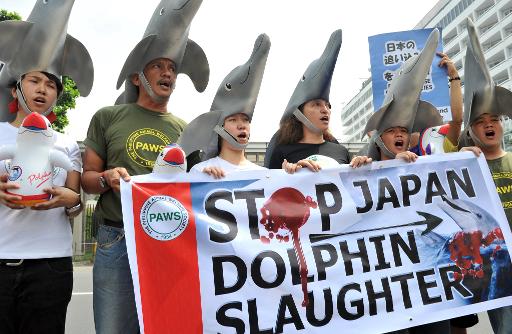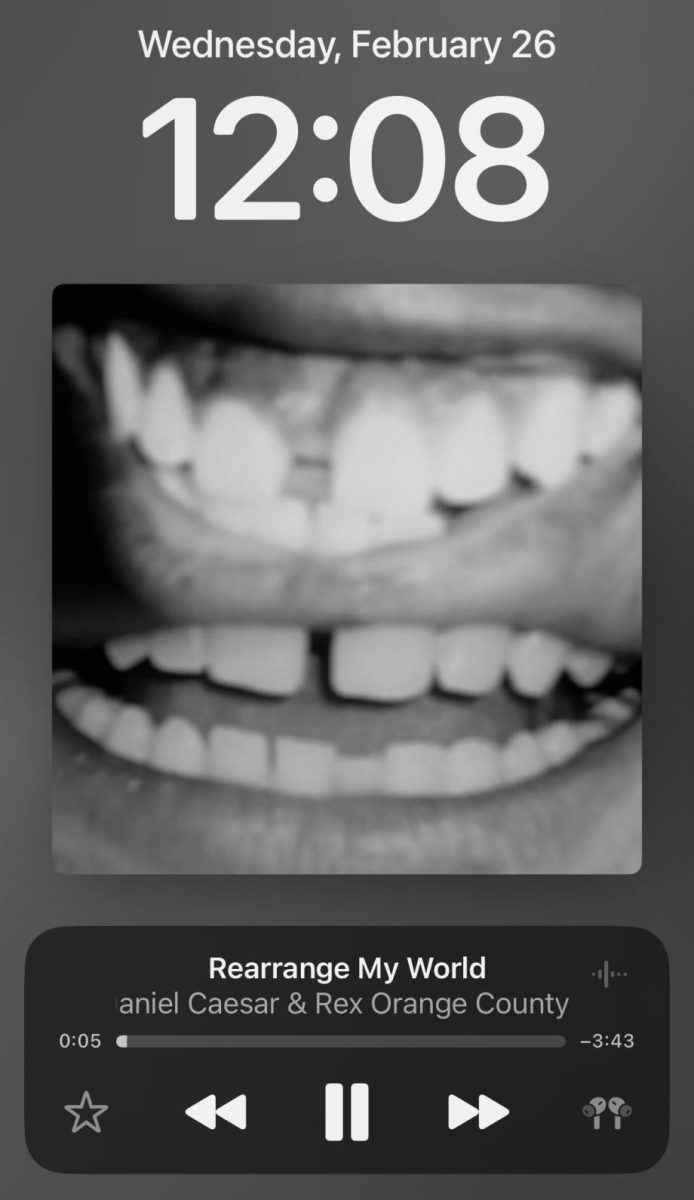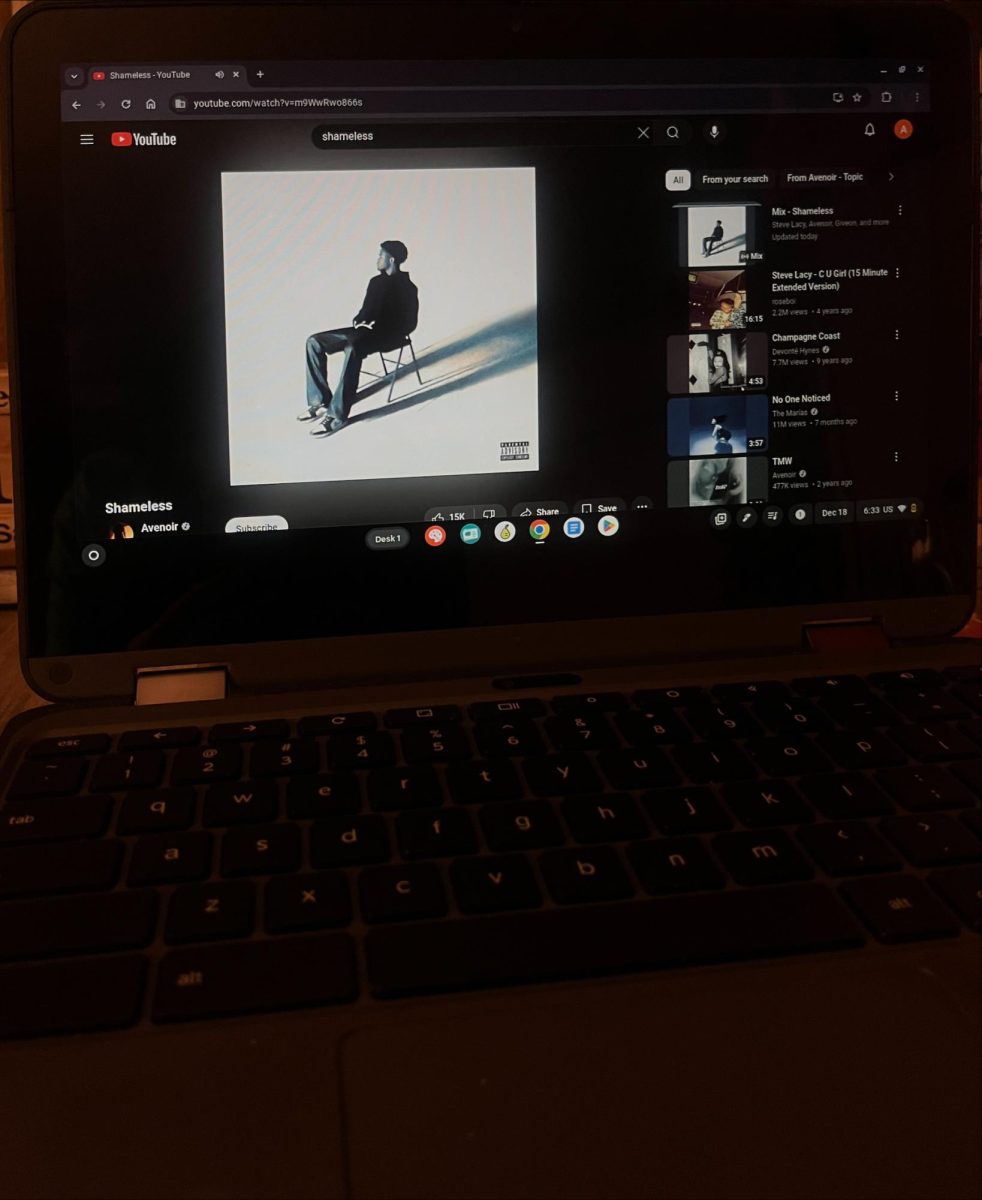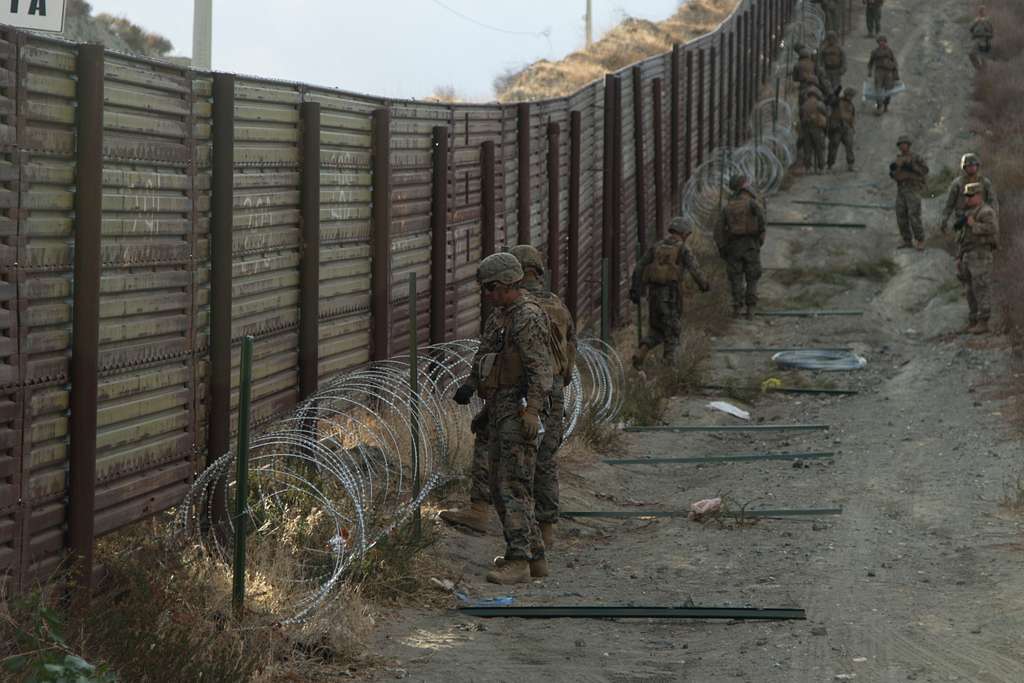The annual dolphin slaughter of Taiji, Japan

Activists wear dolphin hats to protest the annual slaughter of dolphins in Taiji, Japan, in front of a Japanese embassy. Photo from Public Domain.
March 2, 2018
Every year, from September 1st to March 1st, hundreds of dolphins are hunted and killed, with permission from the Japanese government. During this time, dolphin hunters spend hours herding pods of dolphins into a cove on the shores of Taiji, Japan to capture or (most of the time) slaughter them. Not only are these dolphins being killed, they are being tortured, mutilated and sold to spend the rest of their lives in captivity. I believe that this is absolutely disgusting.
Back in 2017, the quota that the Japenese government gave to the hunters was 1,940 animals, which includes nine different species of dolphins and whales. According to Michael Sainato, a reporter for the Observer, “This year’s (2017) tally is an increase from last year, which was set at 1,840 animals—though even with this limit it’s thought that many more dolphins are likely killed and not reported to authorities”.
Japan kept this under wraps until Ric O’Barry decided to do something about it. On the first Earth Day, in 1970, O’Barry launched a campaign against the multi-billion dollar dolphin captivity industry. He called it the Dolphin Project. According to the Dolphin Project, “Over the past 47 years, Ric O’Barry has rescued and rehabilitated dolphins in many countries around the world, including Haiti, Colombia, Guatemala Nicaragua, Brazil, South Korea, the Bahamas Islands and the United States. He is a leading voice in the fight to end brutal dolphin hunts in Japan, the Solomon Islands, Faroe Islands, Indonesia and wherever else they occur”.

O’Barry was employed in 1960 by the Miami Seaquarium where he trained dolphins, including the five who played the role of Flipper, the American TV series. When one of the dolphins, Kathy, died in his arms, he vowed to stop capturing and training dolphins.
On September 3rd of 2017, the Dolphin Project reported the dolphin slaughters in Taiji, Japan. “For hour after hour the dolphins were relentlessly chased…the dolphins were driven towards the cove… for seven hours, the pod fought for their lives, struggling against the deafening sounds of boat engines, of poles being banged and the sheer willpower of the hunters themselves,” says the Dolphin Project in their article.
I don’t know if you know this, but dolphins use echolocation. According to Wonderopolis.org, “Dolphins have developed the ability to use echolocation, often known as sonar, to help them see better underwater”. Echolocation allows dolphins to “see” by interpreting the echoes of sound waves that bounce off of objects near them in the water. When the hunters bang these poles under the water and rev their engines until they blow, this aggravate the dolphins.
Imagine being in a room full of people, everyone’s talking loudly, trying to hear each other. Then, someone plays music REALLY loud, causing the people to start talking louder and louder. Annoying right? Imagine that, but 10x worse. Dolphins are so sensitive to sound, that loud bangs cause them anxiety. What these hunters are doing, is making so much noise that the dolphins get anxiety and remain fearful. These dolphins are feeling these emotions constantly. As the noises get louder, the hunters get closer, until all the dolphins are cornered in a shallow, netted cove.
“The animals are often brutally stabbed, beaten and left to die slow, painful deaths before their meat is butchered and distributed to the market,” stated the Observer. According to Mark J. Palmer, the associate director of the International Marine Mammal Project at the Earth Island Institute, the dolphin meat being distributed is contaminated with mercury. Yes, you read correctly. Contaminated with mercury, and the Japanese government is still backing the hunts.
These annual slaughters were kept quiet for a while until a documentary titled, The Cove, brought to light the terrible truth in Taiji. According to The Guardian, “The film’s graphic footage of dolphins being slaughtered with knives, turning the surrounding sea a crimson red, shocked audiences around the world”.

The Guardian got some Taiji fisherman to speak about their work. ” “We’ve mostly stayed silent since The Cove, and that’s why our point of view was never put across in the media,” says Yoshifumi Kai, a senior official with Taiji’s fisheries cooperative.” His whole point throughout the interview with The Guardian, Kai explains that the hunts in Taiji go back to the 1600s and that it’s something their ancestors did. He claims that the dolphin and whale huntings are what is keeping their town together, but if that were true, why hide it?
Farms don’t hide the fact that they slaughter cows, pigs, and chickens. Yes, they hide the unethical and unhealthy ways they do it, but to hide the entire process? That would be fishy (no pun intended). The Taiji fishermen are killing these dolphins EXTREMELY unethical. They are torturing these animals, so of course, they are going to hide it. It’s interesting how they decided to speak up only after the documentary was released.
“We’re not ashamed of hunting dolphins and would never consider stopping. It’s the most important part of our local tradition,” says Kai in his interview with The Guardian. Claiming that giving your families and your children tortured dolphin meat filled with mercury is your tradition is just ridiculous. If you’re going to murder these dolphins for the sole purpose of making money, then just admit to it. Don’t give us the bullcrap that it’s “your tradition”.
The Dolphin Project‘s goal is to stop the killing and the capturing of all Cetaceans (dolphins, whales, and porpoises). If you would like to help these amazing environmental activists with their quest, you can donate here. These hunts need to stop, for the benefit of the species and the townspeople.





